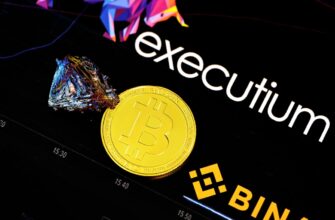SWISX vs SCHF: The Battle of Schwab’s International Funds
Investors seeking international diversification often compare Schwab’s SWISX and SCHF – two popular low-cost options tracking developed markets outside the U.S. While both target similar markets, critical differences in structure, tax efficiency, and accessibility could sway your decision. This 900-word analysis breaks down SWISX (Schwab International Index Fund) versus SCHF (Schwab International Equity ETF) to help you choose the right tool for your global investing strategy.
Key Differences Between SWISX and SCHF
- Structure: SWISX is a mutual fund (requires minimum $1 investment), while SCHF is an ETF (traded like a stock)
- Expense Ratio: Both charge ultra-low 0.06% fees – a tie
- Trading Flexibility: SCHF trades intraday; SWISX prices once daily after market close
- Tax Efficiency: SCHF’s ETF structure typically generates fewer taxable capital gains distributions
- Minimum Investment: SWISX requires $1 minimum; SCHF requires just one share (~$35)
Performance Comparison: Historical Returns
Both funds track the FTSE Developed ex US Index, leading to nearly identical long-term returns. Over the past 5 years, their performance divergence has been minimal – typically under 0.5% annually. However, SCHF’s ETF structure allows tactical investors to leverage intraday pricing during volatile markets. Dividend yields also align closely, averaging 3-4% annually. Remember: Past performance doesn’t guarantee future results, especially with currency fluctuations impacting international holdings.
Expense Ratios and Hidden Costs
With identical 0.06% expense ratios, neither fund has a cost advantage. But consider these hidden factors:
- Bid-Ask Spreads: SCHF may incur tiny spreads during trading
- Mutual Fund Fees: Some brokers charge commissions for SWISX outside Schwab platforms
- Tax Costs: SWISX’s annual capital gains distributions create taxable events in non-retirement accounts
Holdings and Geographic Exposure
Both funds provide exposure to 1,400+ large/mid-cap companies across 24 developed markets. Top holdings include:
- Nestlé (Switzerland)
- ASML Holding (Netherlands)
- Toyota (Japan)
- Samsung Electronics (South Korea)
Regional allocation is nearly identical: ~40% Japan/UK, 30% Europe ex-UK, 15% Pacific, with minimal emerging markets. Neither includes U.S. stocks.
Tax Efficiency: The ETF Advantage
SCHF’s ETF structure gives it a clear tax edge. ETFs minimize capital gains distributions through in-kind transfers, while SWISX must sell holdings to meet redemptions – triggering taxable events. In high-tax brackets, this could cost SWISX holders 0.5-1% annually in extra taxes. For IRAs or 401(k)s, this difference vanishes.
Which Fund Should You Choose?
Choose SCHF if you:
- Want tax efficiency in taxable accounts
- Prefer intraday trading flexibility
- Like fractional share investing
Choose SWISX if you:
- Automate investments with dollar-cost averaging
- Hold exclusively in tax-advantaged accounts (IRA/401k)
- Use Schwab as your primary brokerage
FAQ: SWISX vs SCHF
Q: Can I hold both SWISX and SCHF together?
A: Yes, but unnecessary. Their near-identical holdings create duplication without added diversification.
Q: Which has better dividend reinvestment?
A: Both offer automatic reinvestment. SCHF allows same-day reinvestment; SWISX reinvests at next NAV calculation.
Q: Are emerging markets included?
A: No. Both exclude emerging economies. Consider SCHF + SCHE for complete international exposure.
Q: How do currency fluctuations affect them?
A: Both carry currency risk. Fund values drop when the U.S. dollar strengthens against foreign currencies.
Q: Which is better for small investors?
A: SWISX’s $1 minimum suits micro-investors. SCHF requires buying whole shares (currently ~$35).
Final Verdict
SCHF generally wins for taxable accounts due to superior tax efficiency, while SWISX shines in automated retirement portfolios. With negligible performance differences, your choice should hinge on account type and investment style. Both deliver cost-effective, diversified access to developed international markets – a crucial component of any balanced portfolio.








